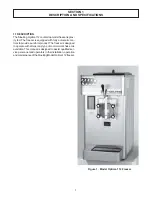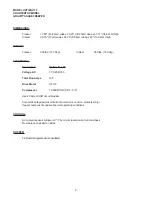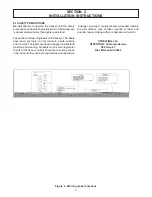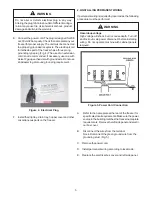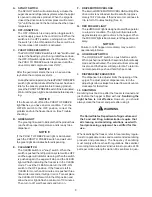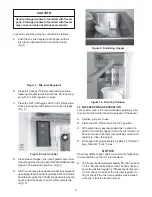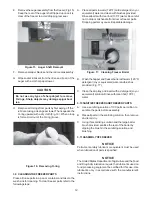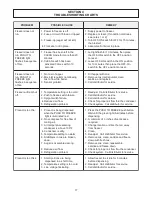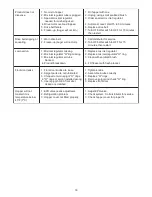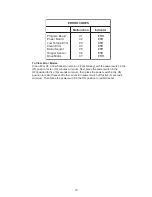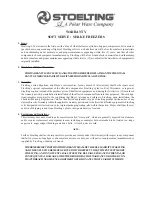
1
5
3.
SANITIZING
–
After the machine has been
cleaned and contains no milkstone, the
machine is reassembled. Then a FDA-approved
sanitizing solution is run through the machine to
kill bacteria. The machine is then ready for food
preparation.
As a recommended cleaner and sanitizer for your
frozen dessert machine, STERA-SHEEN has proven
to be one of the best daily maintenance products for:
·
CLEANING
–
Thorough removal of all solids
including butterfat and milk fat.
·
MILKSTONE REMOVAL
–
Complete removal of
milkstone.
·
SANITIZING
–
FDA-approved no rinse sanitizer
for food contact surfaces.
Additional Information
THE USE OF DELIMERS
A delimer is a strong acid that has the ability to
dissolve milkstone. This type of chemical may
become necessary once high levels of milkstone
have developed. While these products are very
effective for removing HI
GH
levels of milkstone, they
are not ideal for two reasons:
1.
PRODUCT SAFETY
– Strong acids are
dangerous chemicals and handling them
requires safety
2.
MACHINE DAMAGE
– Strong acids will attack
metal and rubber causing premature wear of
parts. The use of a delimer needs to be closely
monitored to avoid damage to machine surfaces
and parts.
With proper daily use of STERA-SHEEN or it’
s
equivalent, there is
no need
for the use of a
DELIMER
.
DO NOT USE BLEACH
·
B
BLEAC
H HA
S ABSOLUTELY NO
CLEANING
PROPERTIES.
·
B
BLEAC
H IS CORRO
SIVE
. It can and will
damage components of the machine causing
premature wear and metal corrosion.
GENERAL PURPOSE CLEANERS
G
General
purpose cleane
rsdo
not
have the ability to
remove milkstone. Milkstone will become a problem
if not remedied
with additional products and
procedures.
THE USE OF CHLORINE TEST STRIPS
“
Test strips”
are used to determine concentrations of
active chlorine in sanitizing solutions. To use the
strips, tear off a small portion and submerge it into
the sanitizing solution. Then, compare the color
change to the color key on the side of the test strip
dispenser to determine the approximate chlorine
concentration.
The ideal concentration of chlorine needs to be 100
ppm (as stated by the FDA).
Follow the directions on the container for proper
concentration.
There are two main factors that contribute to falling
chlorine concentrations in a sanitizing solution.
1.
PRODUCT USE
–
As the chlorine in the
solution is being used, chlorine concentrations
fall.
2.
TIME
–
As time passes, small amounts of
chlorine “evaporate” from the solution. (That is
why you can smell it.)
Sanitizing solutions
should
not
be allowed to fall
below 100 ppm chlorine. New solutions should be
mixed once old solutions become ineffective.
3.13 PREVENTIVE MAINTENANCE
A. DAILY
1.
The exterior should be kept clean at all times to
preserve the lustre of the stainless steel. A mild
alkaline cleaner is recommended. Use a soft
cloth or sponge to apply the cleaner.
CAUTION
Acid-based cleaners, strong caustic componds
and abrasive cleansers will damage plastic
freezer parts and exterior panels. Use mild, al-
kaline cleansers only.
B. WEEKLY
1.
Check O-rings and rear seal for excessive
wear and replace if necessary.
2.
Remove the drip tray by gently lifting up to
disengage from the support and pulling out.
Clean behind the drip tray and front of the
freezer with a soap solution.

